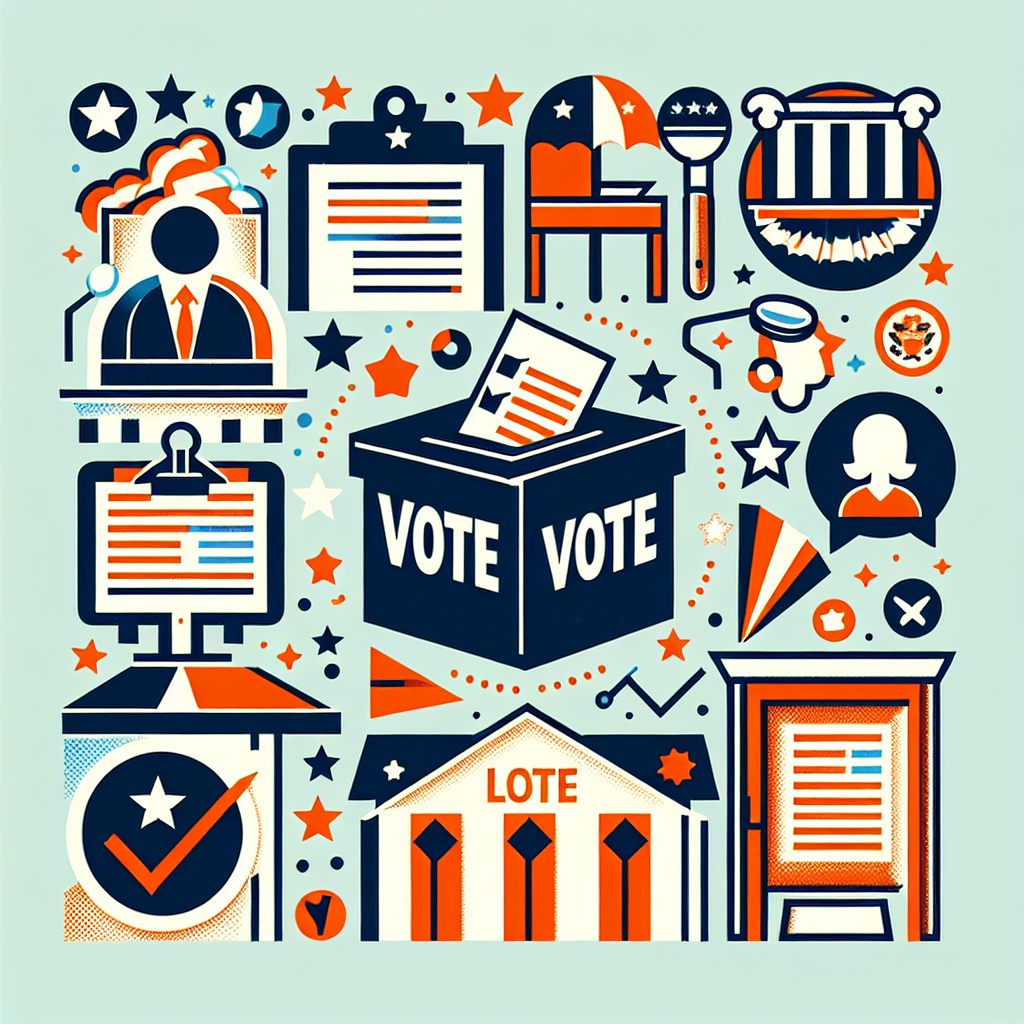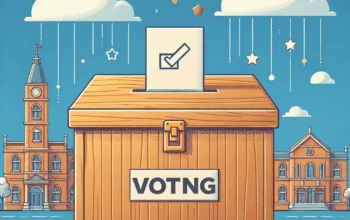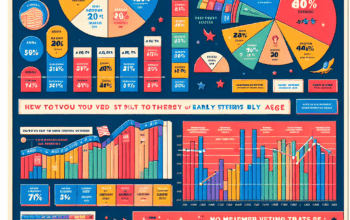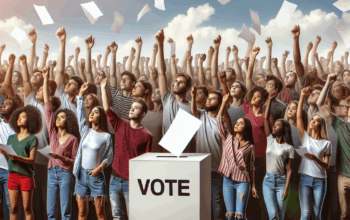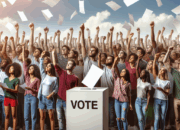Key Election Takeaways: Lessons Learned from the Ballot Box
As the dust settles after the pivotal elections of 2025, it’s clear that we have entered a transformative era in political engagement and governance. With changing demographics, social movements, and technological advancements all playing their parts, the elections have provided valuable insights into the evolving landscape of electoral politics. In this article, we will explore the key election takeaways and lessons learned from the ballot box that will shape future political strategies, enhance voter engagement, and drive policy discussions for years to come.
Understanding Voter Turnout Trends
The 2025 elections saw unprecedented voter turnout, with participation levels reaching record highs in many states. This surge in engagement can be attributed to various factors, including increased awareness around pivotal issues such as climate change, social justice, and healthcare reform. Notably, younger voters—a demographic that has historically been less active at the polls—showed a renewed interest spurred by potent grassroots campaigns and innovative messaging. This phenomenon reflects a significant shift in the political landscape, indicating that mobilizing younger demographics should be a priority for future elections.
Moreover, the voter turnout increases were not solely confined to the young electorate. Historically marginalized communities, often voiceless in previous elections, rallied together to advocate for issues directly affecting their lives. Significant efforts from advocacy groups and civil society organizations to improve access to voting—through initiatives such as mail-in ballots and extended polling hours—have contributed to this turnout. The takeaway here is clear: ensuring equitable access to the ballot and targeting messaging for diverse voter segments can lead to increased participation that fundamentally alters electoral outcomes.
The Power of Digital Engagement
In 2025, digital engagement played a central role in shaping electoral campaigns and influencing voter decisions. With rapid advancements in technology, campaigns leveraged social media platforms and online communities to not only disseminate information but also foster dialogue with constituents. This strategy proved especially effective in reaching younger voters, who rely heavily on digital communication. Campaigns that creatively used platforms like TikTok, Instagram, and Twitter saw greater success in capturing the attention of undecided voters and energizing their base.
Furthermore, the prevalence of misinformation posed new challenges during the election cycle. While technology provided new opportunities for engagement, it also facilitated the spread of false information. This dual-edged sword highlights the importance of digital literacy among voters and the need for campaigns to invest in counteracting harmful narratives. The lessons learned revolve around the necessity of transparent communication and the proactive use of digital platforms to foster trust, counter misinformation, and enhance voter education amid a rapidly evolving informational landscape.
Coalitions and Alliances Matter More Than Ever
One of the most prominent takeaways from the 2025 elections is the significance of strategic coalitions and alliances among different political factions and interest groups. Rather than solely relying on traditional party lines, successful candidates formed diverse coalitions that brought together progressive, moderate, and even some conservative voices under a united front. Such partnerships were particularly vital in regional races, where a collective approach allowed candidates to secure broader support by addressing a wider array of voter concerns.
In particular, the success of candidates who prioritized issues resonating with various groups—such as climate action, economic equity, and comprehensive healthcare—demonstrates the power of an intersectional approach to politics. By building coalitions that emphasized shared values rather than differences, these candidates engaged voters whose interests were overlooked by more conventional political strategies. This approach not only strengthened the electoral prospects of these candidates, but also set a precedent for future elections, by encouraging a collaborative vision for governance.
Additionally, these coalitions highlighted the importance of grassroots movements. Many successful candidates invested time in collaborating with local organizations that possessed deep ties to the communities they sought to serve. This emphasis on local engagement helped candidate campaigns address issues pertinent to their constituents effectively, reinforcing the idea that a community-focused approach is essential for playing the long game in politics.
The Role of Policy Focus in Campaign Strategy
The elections of 2025 further underscored how crucial a strong policy focus is in campaign strategies. Candidates who articulated clear and actionable policy proposals were often met with greater enthusiasm from voters, reflecting an electorate that is hungry for solutions rather than mere platitudes. Key policy areas such as climate action, healthcare reform, and economic recovery shaped campaign discussions, with voters prioritizing candidates who demonstrated a comprehensive understanding of these issues.
This focus on substantive policy had a twofold effect. First, it allowed voters to make informed decisions based on the viability and clarity of candidates’ platforms, fostering a sense of accountability. Second, candidates who could convincingly navigate complex policy discussions often garnered respect from their peers and the media, enhancing their overall credibility and appeal. The takeaway here is profound: for future elections, reinforcing policy discussions and offering coherent solutions tailored to voters’ needs can play a pivotal role in securing electoral victories.
In this context, it’s also important to recognize the evolution of voter expectations. The electorate now demands not only that politicians outline their policies but also that they illustrate how they will enact those measures once in office. Candidates who provided comprehensive plans, including fiscal implications and timelines for implementation, tended to establish stronger connections with their bases.
Adapting to a Changing Electoral Landscape
In 2025, we witnessed a significant shift in the electoral landscape that reflects broader societal changes. From an increased focus on issue-based voting to a heightened consciousness of identity politics, the dynamics of electioneering have evolved notably. Recognizing these changes is crucial for candidates and political parties as they prepare for future contests. Politicians who adapt their strategies to reflect the values and demands of contemporary voters will undoubtedly find greater success.
One important aspect of this changing landscape is the growing importance of social justice issues. Candidates who took firm stances on matters such as racial equity, gender rights, and environmental sustainability found themselves more aligned with the aspirations of a modern electorate. Elections in 2025 highlighted that voters are increasingly looking for representatives who demonstrate authentic commitment to these values—not merely as talking points, but as core philosophies that inform their decisions and governance.
Moreover, with the rise of independent voters and the fragmentation of traditional party affiliations, political candidates are urged to eschew partisan polarization in favor of more inclusive and comprehensive dialogues. This landscape calls for candidates to articulate policies that resonate across party lines while fostering genuine grassroots interactions, as evidenced by the triumphs of numerous independent or third-party candidates in the recent elections.
The key takeaway here is to remain vigilant and adaptable, recognizing that the political discourse is rapidly evolving. Engaging with voters on substantive issues and forming alliances that transcend traditional political boundaries will be critical in navigating the complexities of future elections.
Conclusion
In summary, the 2025 elections have imparted crucial lessons about the evolving political landscape and the strategies required for successful electoral engagement. The emphasis on voter turnout, digital engagement, coalition-building, substantive policy focus, and adaptability to changing voter dynamics offers a roadmap for future campaigns. By harnessing these insights, political candidates can refine their approach to better serve their constituents, enhance voter participation, and create a more robust democracy.
FAQs
What were the main factors driving voter turnout in the 2025 elections?
Voter turnout was driven by increased engagement among historically underrepresented groups, grassroots activism aimed at facilitating voting access, and heightened awareness of critical issues like climate change and healthcare reform.
How did digital platforms influence the 2025 elections?
Digital platforms enabled campaigns to reach younger voters and facilitate engagement through social media, while also presenting challenges with misinformation that required strategic counteraction from candidate teams.
What is the significance of coalitions in modern electoral politics?
Coalitions allow candidates to unite diverse voter groups around common goals, expanding their appeal and facilitating a broader discussion on important issues that resonate across various demographics, which contributed to their electoral success in 2025.
How crucial is policy focus for candidates during elections?
A strong policy focus ensures candidates present tangible solutions that resonate with voter concerns, enhancing their credibility and likeliness of securing electoral support when compared to candidates who may rely solely on slogans.
How should candidates prepare for future elections based on 2025 lessons?
Candidates should focus on engaging with their communities, forming strategic alliances, adapting their messaging to reflect evolving voter demographics, and remaining committed to advocating for issues that directly affect their constituents, informed by the lessons learned from recent elections.
